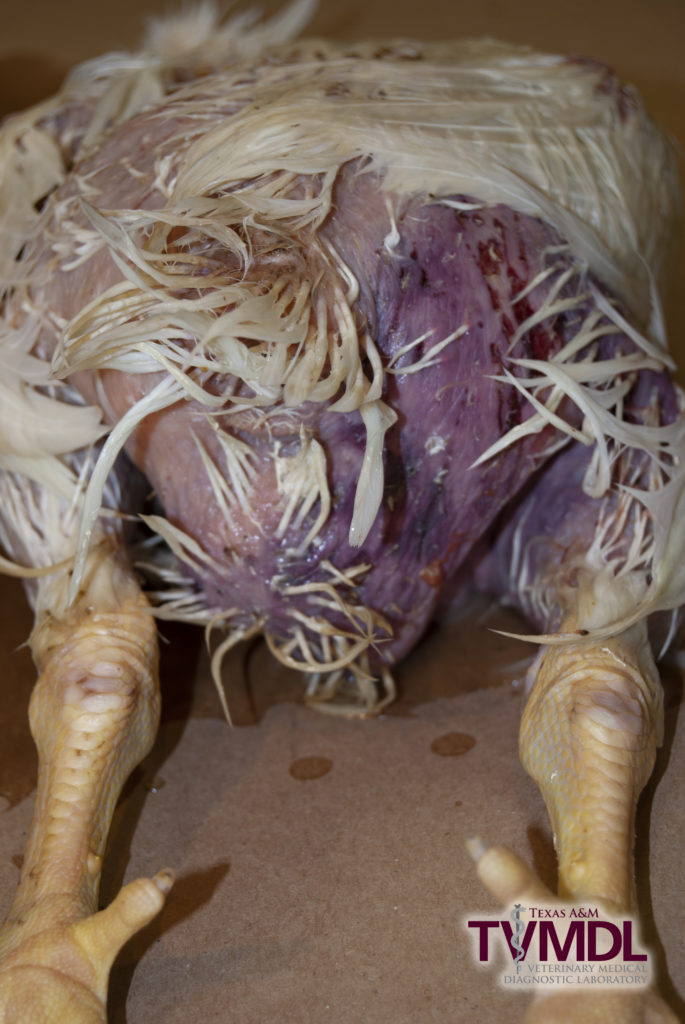Gangrenous dermatitis discovered in separate broiler flocks
Gabriel Senties-Cue, MVZ, EPAA, MS
Recently, the Texas A&M Veterinary Medical Diagnostic Laboratory (TVMDL) in Center diagnosed gangrenous dermatitis (GD) in three flocks of broilers 44 to 50 days of age. All the submissions had a common clinical history of sudden increased mortality, prostration, and change in color of the skin. At necropsy examination, the birds had purple discoloration of the skin in the abdomen, extending into the breast muscles and sternum area, several skin scratches at both sides of the pelvis, and a bloody, gelatinous material accumulated in the subcutaneous tissue. Staphylococcus aureus was isolated from the subcutaneous tissue in all three submissions.
GD is normally a disease of growing birds, between 4 to 20 weeks of age, characterized by necrosis of the skin and severe infection of the subcutaneous tissue. GD is caused mainly by Staphylococcus aureus, Clostridium septicum, and C. perfingens type A, either singly or in combination, which invade and infect the traumatized skin. Their toxins cause necrosis of the skin and cellulitis (inflammation of the subcutaneous tissue). Afterwards, these bacteria and their toxins invade the blood, leading to death of the bird. Predisposing factors to GD include immunosuppression, nutritional deficiency or imbalance, and poor management or sanitation.
For more information about this case, contact TVMDL-Center Resident Director Dr. Senties-Cue. To learn more about TVMDL’s full catalog of tests, visit tvmdl.tamu.edu or call one of TVMDL’s four laboratories.
